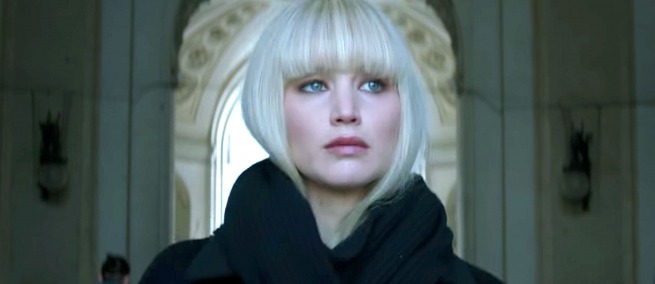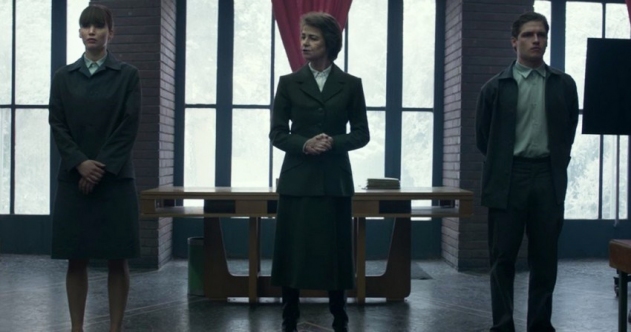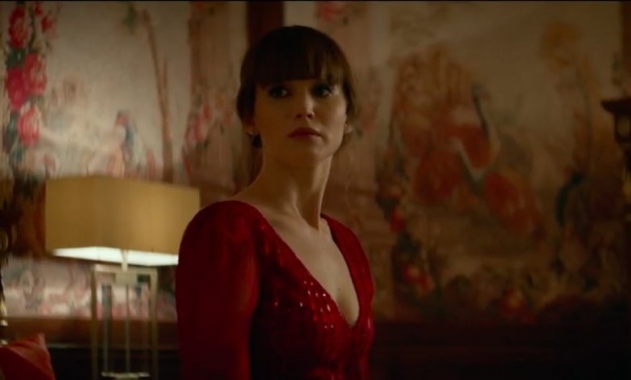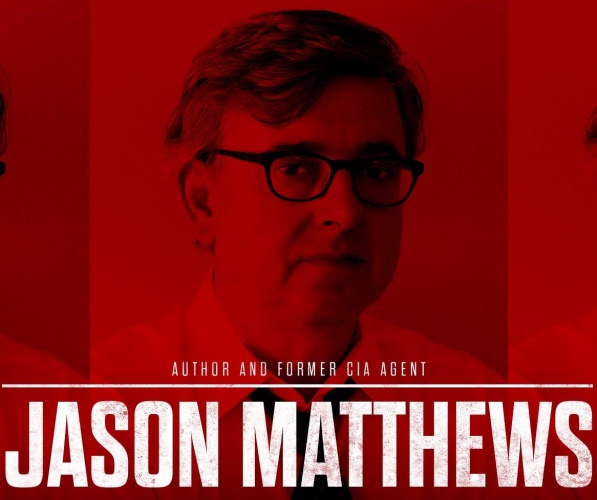
The author of the book Red Sparrow, from which Francis Lawrence’s movie of the same name was adapted, spoke with Science & Film about the craft of espionage. RED SPARROW stars Jennifer Lawrence as Dominika Egorova, a Russian ballerina recruited by a Russian intelligence service that trains people in sexual entrapment. Jason Matthews wrote the book Red Sparrow based on his experience serving in the CIA for 33 years; Sparrow Schools existed in Russia in the 1960s and ’70s. Matthews was a technical consultant on the screenplay, written by Justin Haythe (A CURE FOR WELLNESS), so that it could accurately reflect CIA techniques and Cold War operations. Matthews and Science & Film spoke by phone the week that RED SPARROW was released by 20th Century Fox.
Science & Film: How is it for you to see your book adapted into a film?
Jason Matthews: It’s very gratifying. My debut novel was picked up by 20th Century Fox, but I also was warned by my literary agent that as the author I could not expect the movie to come out exactly like the book, and I shouldn’t have pride of authorship because a screenplay is quite a lot different than a novel. John le Carré famously said that if a book is a cow, a screenplay is a bullion cube.
There have been a lot of reviews of the movie and if there is one consistent theme, it’s that it’s based on the book written by a CIA veteran, and that the tradecraft in the espionage part of the movie is consistently authentic and believable. So as an author, I had very little to do with the movie, but if that’s what people take away from the movie then the author’s job is complete.

S&F: What are some of the espionage techniques depicted?
JM: In the opening scene of the movie, a CIA officer meets a Russian agent. In the first iteration of the script, the screenwriter wanted the Russian to leave an envelope on a park bench and to walk away. I said, if you want to make this a brush past then [the envelope] has to be passed from hand to hand. These are the sort of authentic details that I helped [the filmmakers] with.
S&F: In the example you just gave, the human is central to the espionage act. During your 33 career at the CIA, did the central role of human intelligence?
JM: A lot changed in the CIA. Social media, face recognition software, and computerized travel records. But the one immutable reality is that the best espionage, the best intelligence, comes from a human source because only a human source would know the plans and intentions of the target country. We call that human intelligence “HUMINT.”
A lot of the basic tenets of espionage and intelligence work haven’t changed for hundreds and hundreds of years. Judeans were doing brush passes to fool the Romans in biblical times, Russians have been doing their active measures programs since the Bolshevik Revolution. That’s why they call it the second oldest profession.
S&F: What’s the first oldest?
JM: Well, I wrote about Sparrow School where women are trained to be seductresses. That’s the oldest profession.
S&F: Did Sparrow School actually exist?
JM: Yeah. In the ’60s and ’70s, in Soviet times in the city of Kazan, there was a Sparrow School where young women were taught the ins and outs of elicitation and sexual entrapment.
S&F: Why is “HUMINT” abbreviated as such?
JM: There are lots of “ints.” Signals intelligence which is called SIGINT, there is imagery intelligence–the pictures that satellites take–that’s called IMINT.

S&F: How would you estimate that the percentage of intelligence that comes from each of those "ints" stands now?
JM: As satellites, cameras, and intercept machines have gotten better, the market share probably has expanded in the other “ints.” But, there is no denying that best intelligence, the most strategic information–stealing secrets is what we do in the CIA–comes from a human source.
S&F: Why did you want to write the book Red Sparrow?
JM: The career is so intense, so experiential, it’s a 24/7 kind of career, and when you retire it really ends full stop. So when I retired after 33 years, I started writing a fictitious mosaic of the people we knew, the places we’d lived, and the things we did. My manuscripts had to be approved by the publication review board at CIA. Every comma, every period was reviewed so I didn’t inadvertently reveal sources and methods. One fiction novel begat another. I just came out with my third novel in the Red Sparrow trilogy called The Kremlin’s Candidate.
S&F: I’m sure you’ve seen THE MANCHURIAN CANDIDATE by John Frankenheimer.
JM: The original Manchurian Candidate really played on the evocative nature of the unknown, Communist-controlled mole, high up in the government. And in fact, the plot of The Kremlin’s Candidate is that Vladimir Putin has a mole high up in the U.S. government who becomes one of three candidates to take over CIA. If he takes it over, then he gets access to the top-secret list of Russian names who are working for CIA in Moscow including our heroine, and that would be disastrous for her.
S&F: Are you a fan of any movies that depict espionage?
JM: There are a number of them. One of the early ones in the ’60s was THE SPY WHO CAME IN FROM THE COLD, starring Richard Burton. That was a very, very good one. There is another film made in the mid 90s, a French/Israeli movie called THE PATRIOTS. It’s very authentic. The golden age of espionage noir was the ’60s and ’70s.
S&F: Was that because of the Cold War?
JM: I think. It was the Red Scare, the inscrutable Russians, the threat of mutually assured destruction, it was a pretty good atmosphere in which to make spy movies.

Jason Matthews served in the CIA for 33 years in multiple overseas locations. Red Sparrow is the first in a trilogy; the final book, The Kremlin’s Candidate, was published in February 2018. RED SPARROW is directed by Francis Lawrence, who also directed the three HUNGER GAMES movies. It stars Jennifer Lawrence, Joel Edgerton, Charlotte Rampling, Mary-Louise Parker, and Matthias Schoenaerts. It is now in theaters.
TOPICS